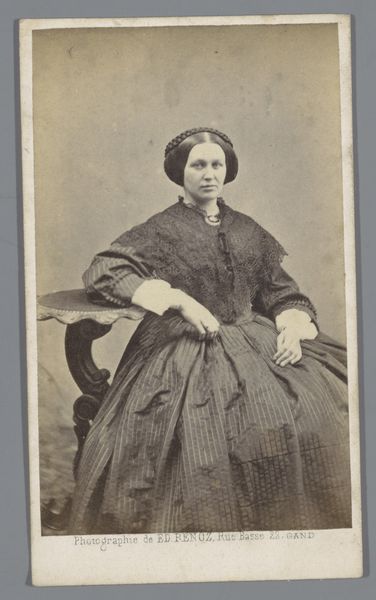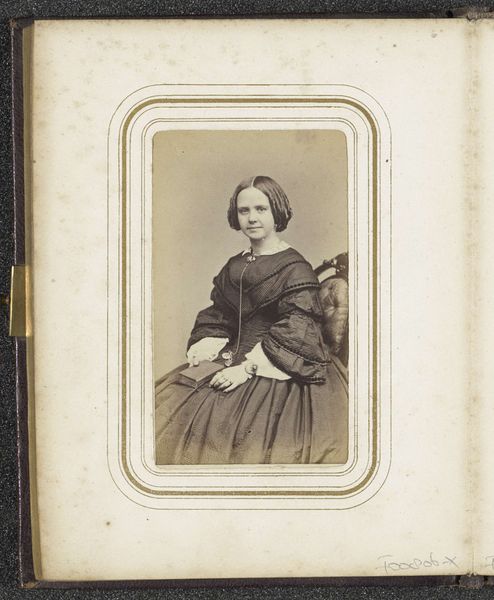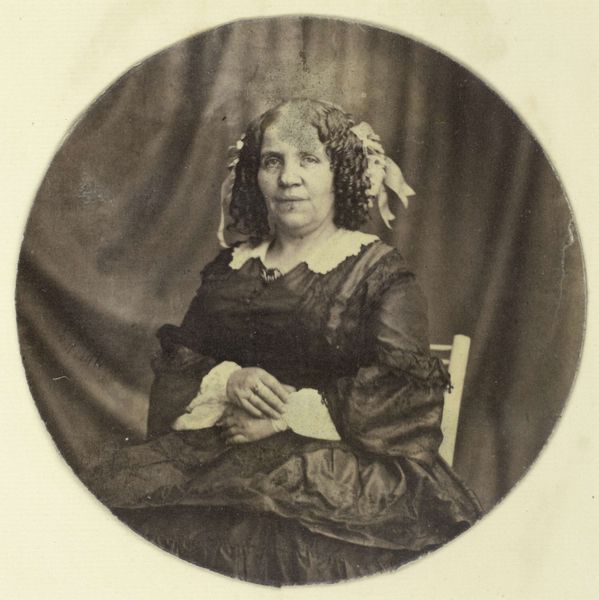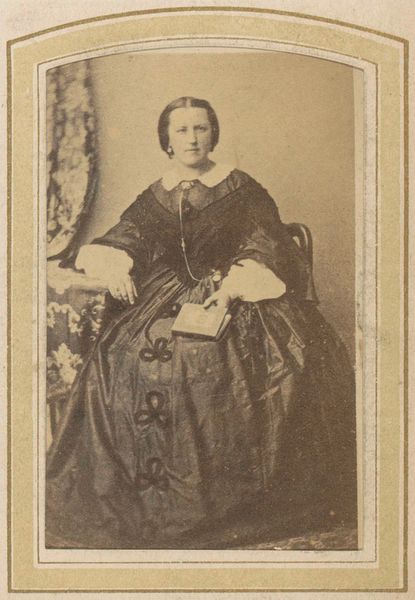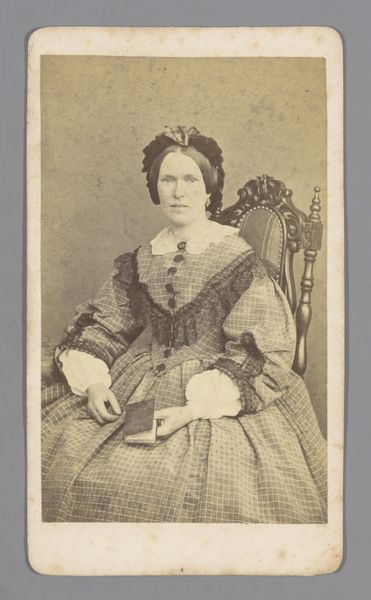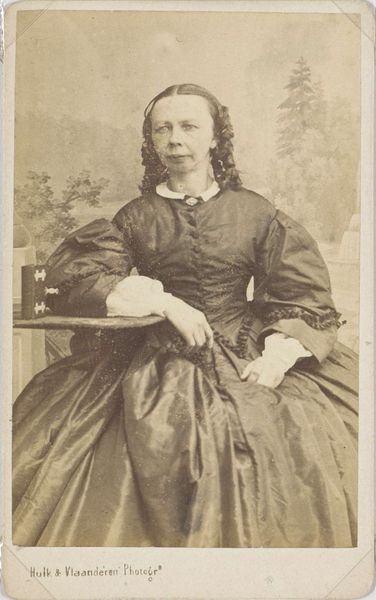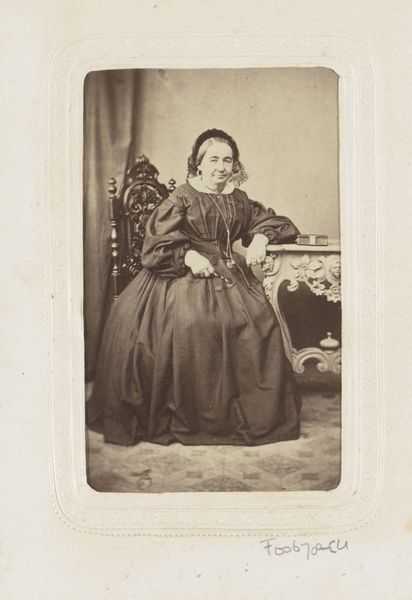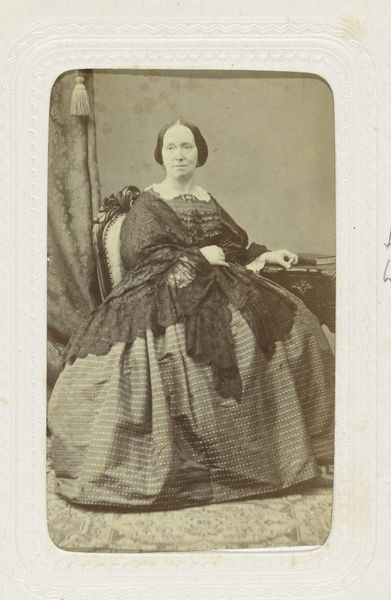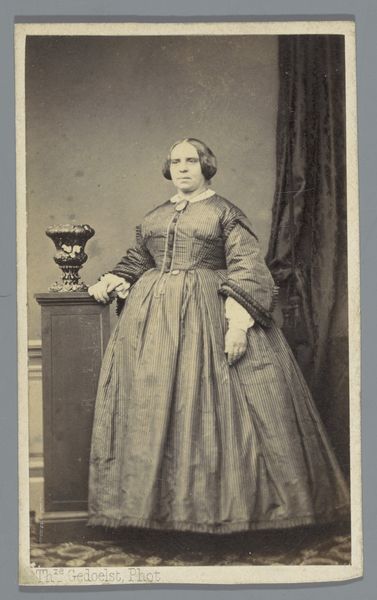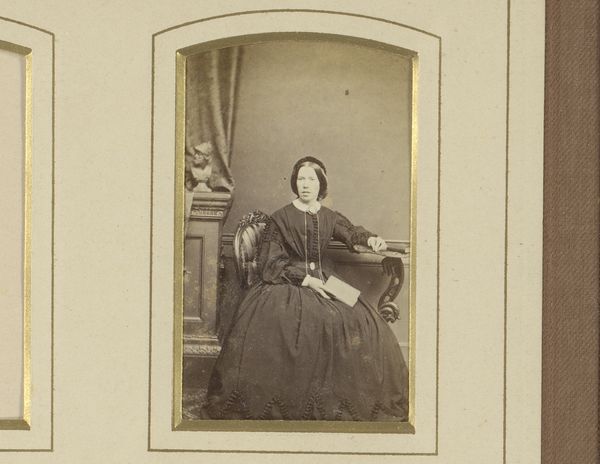
Dimensions: height 101 mm, width 71 mm
Copyright: Rijks Museum: Open Domain
Editor: This daguerreotype, "Portret van Euphrosine (Rosina) Asser-Oppenheim," was created around 1854 by Eduard Isaac Asser and is now held at the Rijksmuseum. It feels so delicate and personal, but what catches my eye is the very visible materiality – you can really see the way the image is built up through light and silver. What's your take on it? Curator: From a materialist perspective, this image is fascinating. Look closely at the process involved in creating a daguerreotype. It involved meticulous labor: polishing a silver-plated copper sheet, sensitizing it with chemicals, exposing it in the camera, developing the image with mercury vapor, and then fixing and gilding it. Editor: Wow, that’s a lot of work. Curator: Exactly! Consider this labor, not just as a technical process, but as a form of social practice. The expense of the materials – silver, mercury, and so on – would have dictated who could afford to be photographed, perpetuating social and economic divides. What does the sitter’s attire say about this social dynamic, regarding her class? Editor: She looks wealthy with that lace and dress… So this portrait then becomes more than just an image of a person. Curator: Precisely! It becomes an artifact that reveals aspects of the industrial revolution – both the technological innovation and the capitalist consumption driving artistic practice, and shaping representation. Editor: That is such an interesting way to look at art. I’ll never see photography the same way. Curator: Considering the material conditions shifts our focus from purely aesthetic appreciation to an examination of labor, economy, and technology, broadening our understanding.
Comments
No comments
Be the first to comment and join the conversation on the ultimate creative platform.
